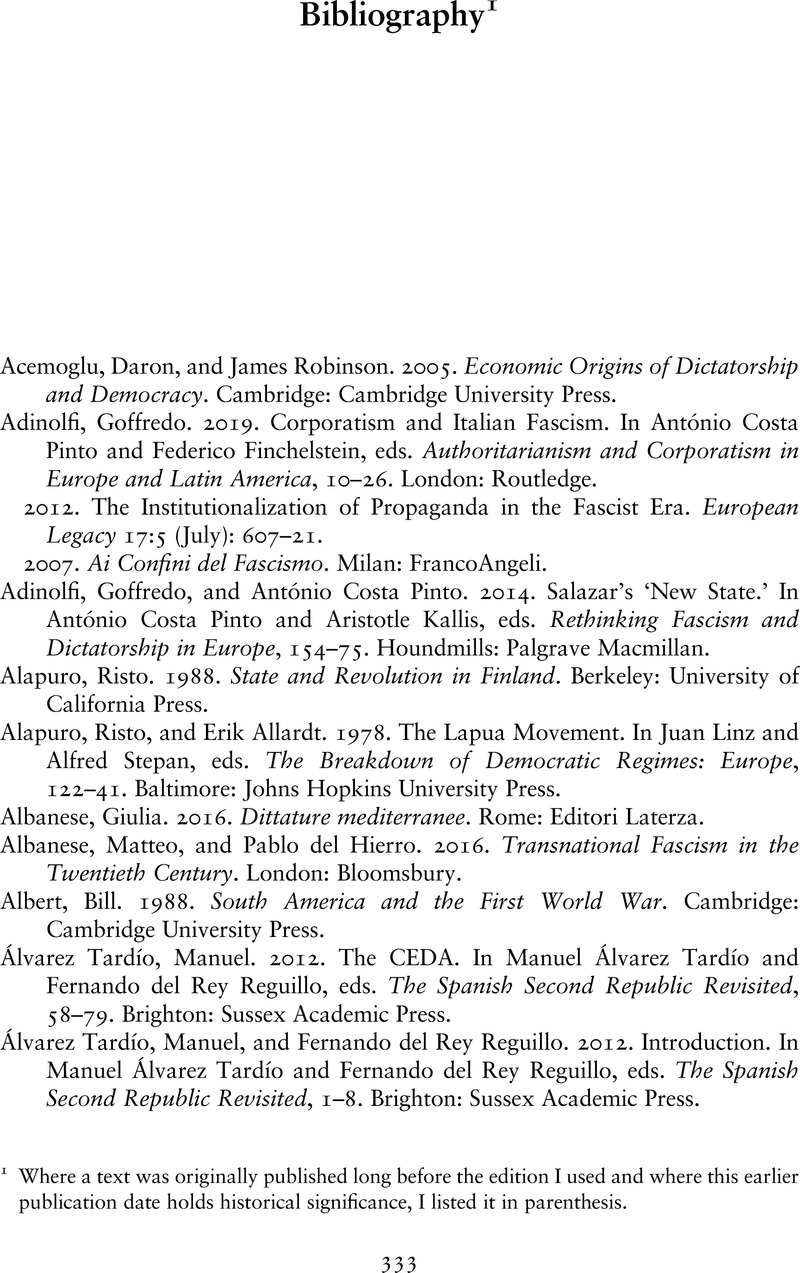Book contents
- Assault on Democracy
- Assault on Democracy
- Copyright page
- Contents
- Tables
- Preface
- Acknowledgments
- 1 Introduction
- 2 Theory: The Double Deterrent Effect and the Bounds of Rationality
- 3 The Soviet Precedent and the Wave of Isomorphic Emulation Efforts
- 4 The Suppression of Isomorphic Emulation Efforts and Its Limited Regime Effects
- 5 Persistence of the Communist Threat and Rising Appeal of Fascism
- 6 The German Exception: Emulating Full-Scale Fascism
- 7 The Spread of Fascist Movements – Yet of Authoritarian Regimes
- 8 Conservative–Fascist Relations and the Autocratic Reverse Wave
- 9 The Edges of the Autocratic Wave: Battered Democracy and Populist Authoritarianism
- 10 Conclusion
- Bibliography
- Index
- References
Bibliography
Published online by Cambridge University Press: 05 February 2021
- Assault on Democracy
- Assault on Democracy
- Copyright page
- Contents
- Tables
- Preface
- Acknowledgments
- 1 Introduction
- 2 Theory: The Double Deterrent Effect and the Bounds of Rationality
- 3 The Soviet Precedent and the Wave of Isomorphic Emulation Efforts
- 4 The Suppression of Isomorphic Emulation Efforts and Its Limited Regime Effects
- 5 Persistence of the Communist Threat and Rising Appeal of Fascism
- 6 The German Exception: Emulating Full-Scale Fascism
- 7 The Spread of Fascist Movements – Yet of Authoritarian Regimes
- 8 Conservative–Fascist Relations and the Autocratic Reverse Wave
- 9 The Edges of the Autocratic Wave: Battered Democracy and Populist Authoritarianism
- 10 Conclusion
- Bibliography
- Index
- References
Summary

- Type
- Chapter
- Information
- Assault on DemocracyCommunism, Fascism, and Authoritarianism During the Interwar Years, pp. 333 - 366Publisher: Cambridge University PressPrint publication year: 2021

